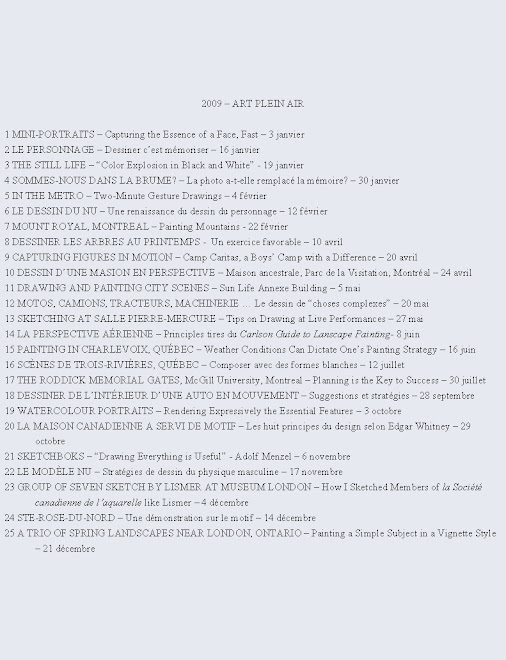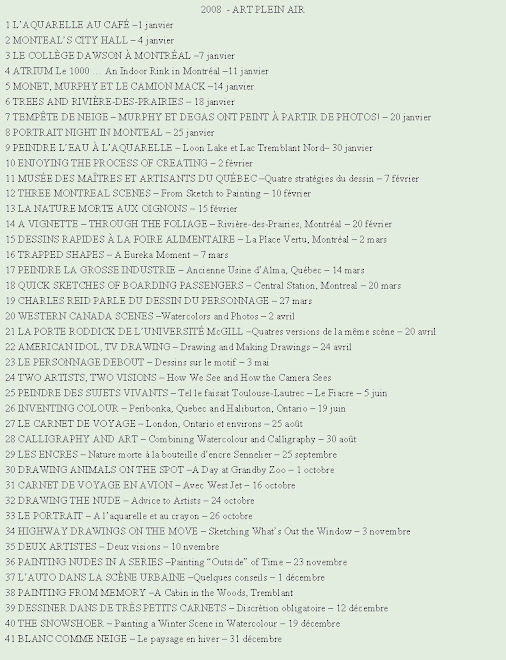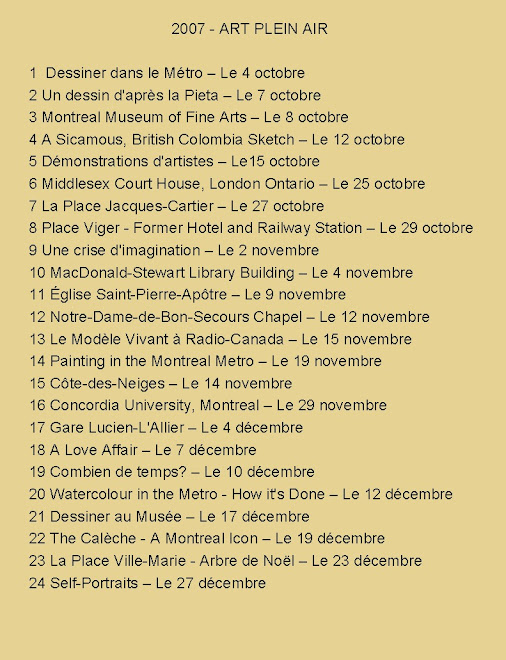
Charles Reid, in the Spring 2008 issue of WATERCOLOR Magazine, says: “I find that some watercolorists can get so technically good that the work looks dead.”
My feeling is that a “too technically good” watercolor is often the result of an over dependence on the use of the photograph. I feel that working from life or from nature as often as possible brings life to one’s work. There is nothing wrong with using photos as an aid, but plein air work and experience is very important.
My feeling is that a “too technically good” watercolor is often the result of an over dependence on the use of the photograph. I feel that working from life or from nature as often as possible brings life to one’s work. There is nothing wrong with using photos as an aid, but plein air work and experience is very important.

In order to support these statements I examined photos which were taken at the same time as I painted a couple of scenes on site last summer in the Rockies. Could I have succeeded as well working only from the photos? I don’t think so. Here are my reasons:

Emotional reaction: One advantage of sketching on site is that it gives me ample time to feel and record my emotional reaction to the scene. A photograph will record details but not recall feelings.
Painting what I want to see: Painting on site permits me to choose immediately what I wish to say. The 360 degree panorama of the outdoors allows me to compose the scene according to my wishes. I can select or eliminate. When working solely from a photograph the temptation is to reproduce without interpretation the composed or cropped scene. The resulting painting often “looks like a photograph”.
Three-dimensional sensation: Photographs flatten the scene and distort perspective. Color and value are rarely reproduced correctly especially in shadow areas. When one paints on site one sees the actual color and values in nature. Also, the camera has but one lens, we have two. This permits us to see shapes as three-dimensional.

Climatic changes: During the time that one sketches a scene the quality of light can change. For example, the sky may become cloudy or change color. The photo is limiting since it records but one moment in time. When painting solely from a photo, one has either to copy the light recorded or invent it. The plein air sketch is a composite of atmospheric changes observed, integrated and recorded.
Simplify: When asked what Charles Reid considered the most important pieces of advice he could offer the artists he teaches, he answered: “Simplify, know what you want to say …” It is difficult to simplify a photographed scene. Photos generally say too much or too little. It is easier to edit a scene when on site. Working within an abbreviated time frame invites simplification and synthesis.

Finally, while teaching at a workshop recently, I was surprised that my book of travel sketches and drawings took so long to be returned to me as it was circulated around the hall. Had I circulated photos of the same scenes they surely would have been returned much quicker. I rarely look at my travel photos. However, I never tire looking at the sketches of the same scenes.
Raynald Murphy sca









Aucun commentaire:
Enregistrer un commentaire